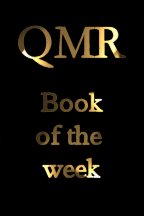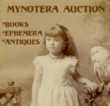|
|
|


|
|

|
|
by Craig Stark
#124, 30 June 2008
|
|
Encyclopedia
of Rocks, Minerals, and Gemstones
Many years ago I stumbled upon an unadvertised estate sale that featured, among other things, a large jeweler's library. This was in pre-ScoutPal days, when you survived (or didn't) by your experience and/or instincts. Some books in this house, as you might suspect, had obvious value - a scholarly reference on black pearls, a study of Australian diamond mining, etc. - but others were more iffy. And just before I left, I noticed a stack of 30 or so thick burgundy binders in a closet. All had three large letters printed on the spines: GIA (The Gemological Institute of America). I leafed through one quickly, noted that it appeared to be some sort of correspondence course in jewelry, and asked if I could taken them for another $20. On the drive home, I began to second guess myself, thinking that I'd probably wasted that last $20. This kind of thing had happened before, still does sometimes: Spending money can produce a momentum to spend more, even if there's nothing left worth spending money on. When I got home, I looked for comparables online, found none, and, thinking they would be a tough sell, put them on the top shelf of a bookcase and forgot about them. My instincts had been "confirmed."
Several years later, after selling the bulk of the other books I'd bought at that sale, I decided in a what-the-heck moment to put one of the binders up for auction. Within hours I was getting emails along these lines: "I've been looking for this for years. Will you take $100 for it? Do you have any others?" Did I ever. To make a long story short, that $20 stack of binders eventually delivered over $5,000. GIA, you see, is a global gemology authority.
I also came home with a number general gemstone, jewelry, etc., dictionaries, encyclopedias, and so on, some of which never sold. I recall being surprised at how many of them there were - most appearing to be derivative, that is, compiled from sources that preceded them, each feeding upon what came before. In a word, they were hopelessly overlapping. Small wonder they didn't sell. The few that did sell - funny, it wasn't apparent why. But that's how it is sometimes. And as much as you try to understand why some books sell and some don't, you can't always figure it out. And so you content yourself with committing the title to memory.
Which brings me to the QMR Book of the Week - Encyclopedia of Rocks, Minerals and Gemstones. Again, nothing special here that I can see, and a lot of it apparently derivative, not to mention introductory. Still, with Amazon sales rankings sometimes dipping below 100,000 and prices consistently north of $40, something must be going on, right? Right. But if you can't figure it out either, memorize the title!
You'll see 100 profit-producing books like this every 3 months in BookThink's Quarterly Market Report of Common,
Profitable Books, each one presented in a clear format with bibliographic essentials and links to photos. Here is the actual
entry for Encyclopedia of Rocks, Minerals and Gemstones, #25 in QMR, issue #5 (soon to be published):
TITLE: ENCYCLOPEDIA OF ROCKS, MINERALS, AND GEMSTONES
AUTHOR: Henry Russell, Chris Pellant
ILLUSTRATOR: n/a
EDITOR: n/a
PLACE: San Diego, CA
COPYRIGHT DATE: 2001
IMPRINT: Thunder Bay Press
ISBN OR LCCN: 1571455620
ISBN-13: 978-1571455628
BINDING: Hardcover
COMMENTARY: Now and again, we run across books that display no apparent flashpoints. This encyclopedia is a good introduction to the subject, it's packed with illustrations, etc., but it's not like there aren't a million other similar titles out there. We're including it here anyway to illustrate the phenomenon.
LINK:

If you'd like to see 100 more of these every quarter, subscribe
hereto
BookThink's QMR today:
Subscribe to QMR
here.
Back issues are also available for purchase.
|
|







|
|
|


